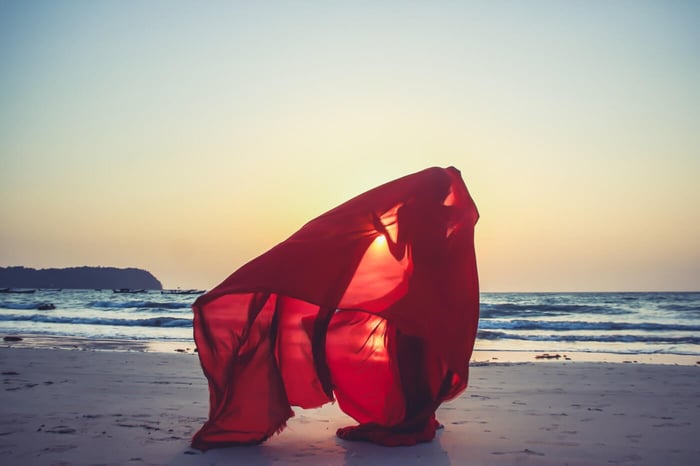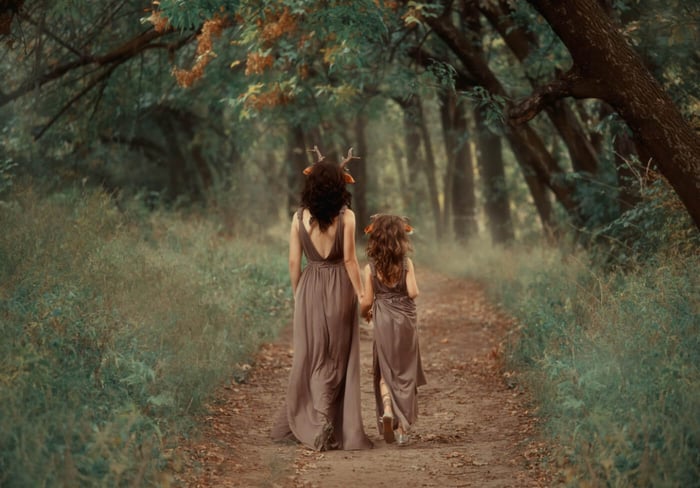On the Wheel of the Year in the Northern Hemisphere, the Summer Solstice arrives in June. The Summer Solstice is also known as Midsummer or Litha. This is the time when the sun stands still. The solstice is known for its golden evenings, dusk flecked with fireflies, and the full bloom of the natural world. This is the time of the Goddess. And there are many Goddesses to connect with at this time of year. The warmth of the year is now in its fullest expression. Magic is afoot, and if you’re in the forest, the meadows, by the stream, barefoot on the earth, or against a tree, you can feel its energy. All you must do is listen.
The exact moment of the Solstice is when the Sun enters the watery sign of Cancer. And traditionally, this Sabbat is all about celebrating the sun, fire, and the great abundance and fertility of the land and Earth around you. Countless cultures for many years have marked this time with their own rites, but they all have one aspect in common, a devotion to the Sun.
To connect with this glowing and powerful star, call on one of these Goddesses to help you blaze your way forward…
Aine, The Faerie Queen
Aine is the Celtic Goddess of Midsummer and Queen of the Faeries. Honored during a Midsummer celebration, she is associated with summer, love, protection, fertility, wealth, and sovereignty.
Myth said that she could take the form of ‘Lair Derg’, a red mare that no one could outrun, in order to walk amongst her people.
On Saint John's Eve, on the eve of the 23rd, just after the solstice, people used to gather on Cnoc Áine where she was said to dwell. Then they would light bunches of straw and hay tied on poles.
These poles were then carried in procession to the top of the hill. Later, they would run with the flames through their fields and between cattle to bring good luck for the rest of the year.
Amaterasu, The Origin of Light
The first of the Goddesses is Amaterasu. Amaterasu is a Japanese Sun Goddess and a central figure in the Shinto religion.
Myth states that all light originated with this Goddess and she is known for her compassion, warmth, and kindness. Through her many stories in Japanese mythology and worship, Amaterasu has a deep connection to nature, both in her family lineage and in her affinity with the sea, snakes and dragons, winds and typhoons.
Brigid, The Goddess Born from Fire
Although celebrated at Imbolc, in the heart of winter, Brigid is also connected with fire, the forge, and metal workers, and this time of Midsummer. In early depictions of this fiery goddess, she was sometimes called the Flame of Ireland or Fiery Arrow.
In myth and lore, it is written that when Brigid was born at sunrise there was a tower of flame that connected her to the heavens themselves.
She is also the goddess and protector of mothers and newborn children, and summer is often a time of fertility and birth. She is a caretaker of wild animals, the patroness of poets, and she is often described as redheaded and wearing a cloak of sunbeams, sometimes shown as a triple goddess.
Saule, The Goddess of the Dancing Sun
Saule is a Baltic Sun Goddess, married to the moon. According to myth and lore, you can find Saule riding through the sky on a chariot drawn by horses that never tire on wheels of copper. She is associated with growth and fertility and is celebrated on St. John’s Eve much like Aine. To honor Saule, legend has it that the sun would dance on a silver hill wearing silver shoes all while wreathed in a garland of red flowers. She is known to have a green snake as a friend and companion. If you see one on the Summer Solstice, it is a sign that this bright goddess is near.
Zorya, The Goddess of Dawn
Zorya is another of the Sun Goddesses. Zorya is a figure in Slavic Folklore known as the personification of dawn. In some accounts she is called a Goddess, however, depending on the tradition she is sometimes referred to as “The Red Maiden.” Much like the figure of Aurora or Eos in Roman and Greek Mythology, she is depicted as the sister of the Sun and Moon. Zorya can be found in the Palace of the Sun, opening the door each morning for the sun to pass through its gate, and sail across the sky.









